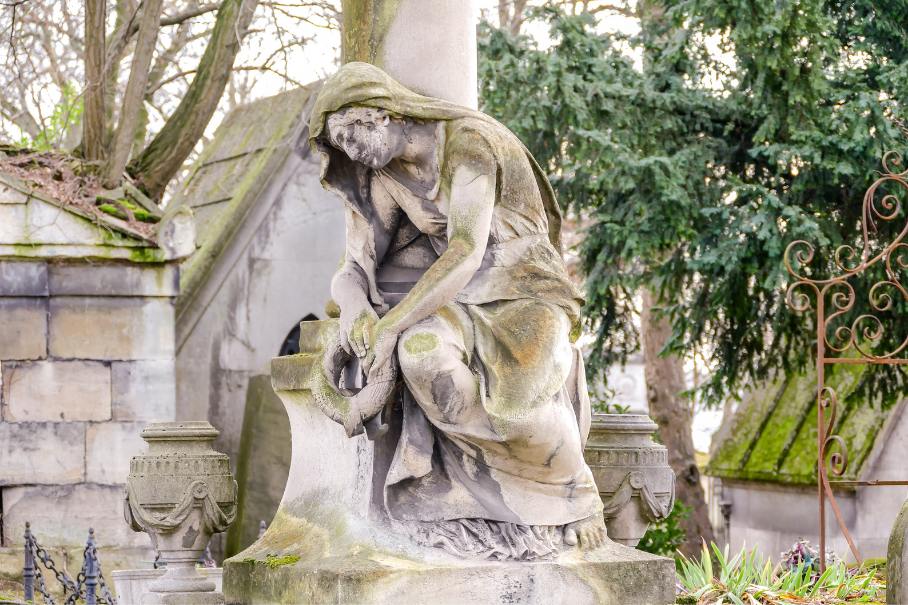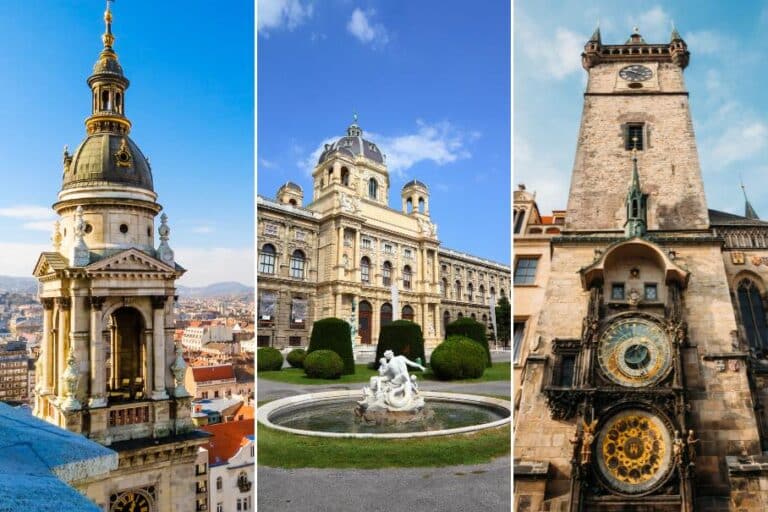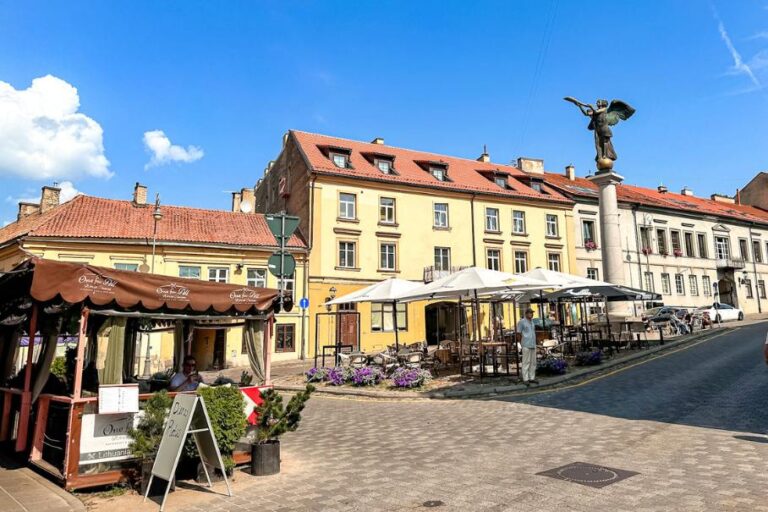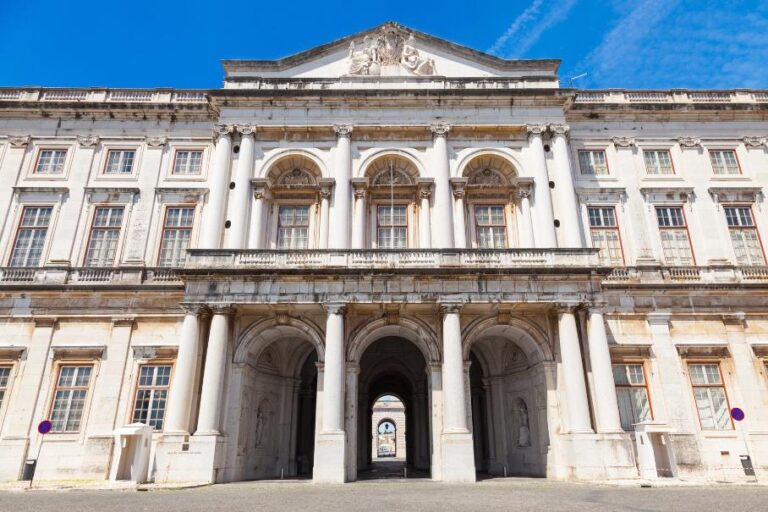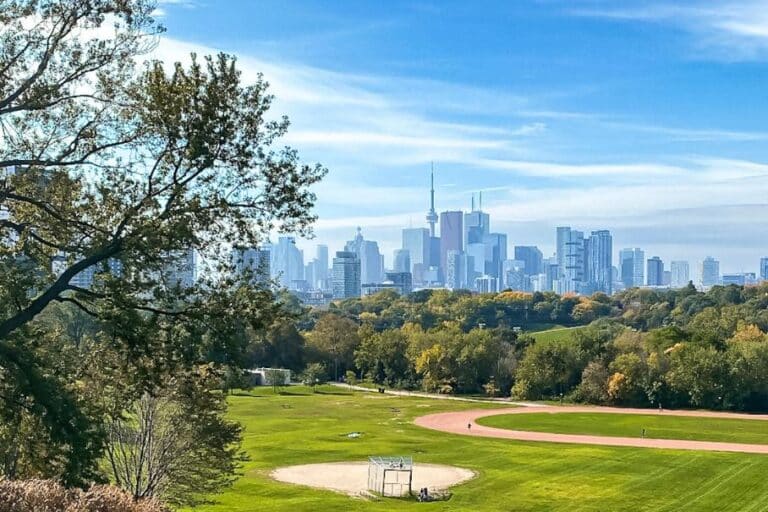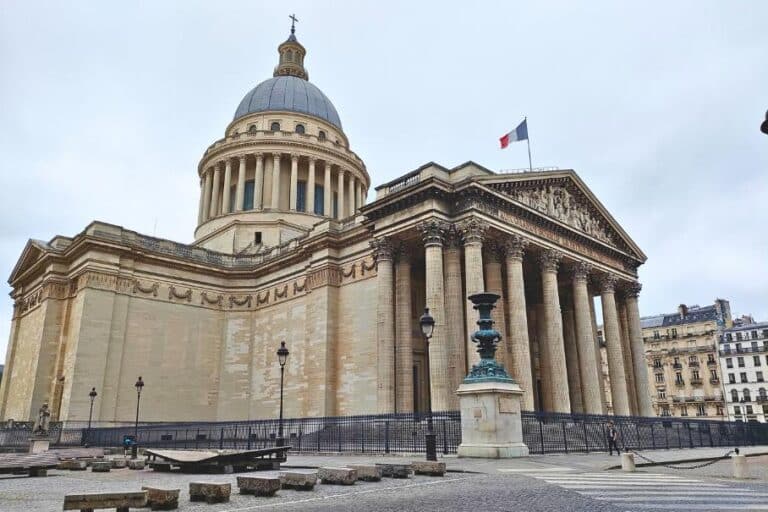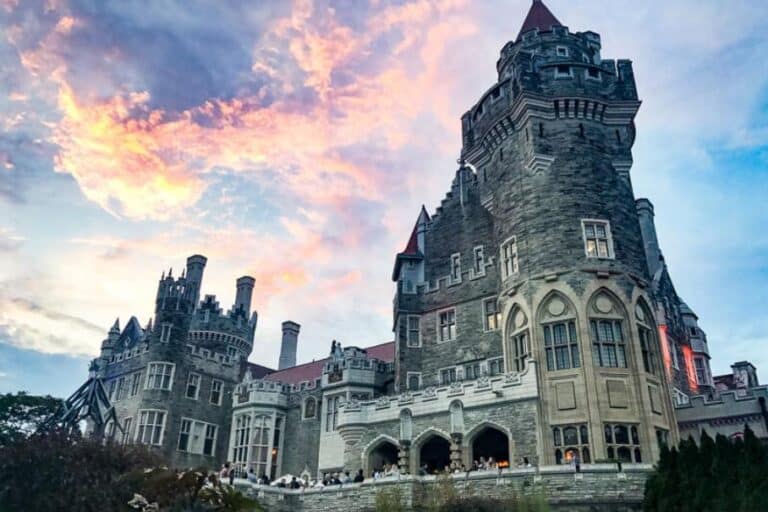Extraordinary Père Lachaise Cemetery: Graves of Legends
While a trip to a cemetery might not be on top of many people’s must-see places, there are times when it can be an interesting attraction. The Père Lachaise cemetery in Paris (cimetière du Père Lachaise in French) attracts thousands of visitors each year and is one of the most famous cemeteries in the world. It is the resting place of many famous people who once lived here, including Jim Morrison, Oscar Wilde, Sarah Bernhard and Gertrude Stein.
Usually, I’m not a huge fan of cemeteries, but something about Père Lachaise makes this a different experience. After all, this is probably the closest you will get to rubbing shoulders with so many famous (although dead) people in one place. With over 110 acres (44 hectares), it’s home to many famous gravesites, and you don’t have to be a dark tourist to appreciate them.
About Père Lachaise Cemetery
In the early 19th century, Parisian officials found themselves running out of places to bury the dead. The Père Lachaise Cemetery was established as a solution in 1804. The cemetery spans over 110 acres (44 hectares) and is located in the 20th arrondissement of Paris. The cemetery is named after Father François d’Aix de La Chaise, who was King Louis XIV’s confessor. With over 300,000 graves and the remains of more than 1,000,000 people, it’s a testament to the city’s rich history.
The creation of the cemetery was an efficient solution. As other cemeteries in Paris reached capacity, there was a need for additional space to bury the dead. Before that, Parisians were buried in the quarters of the city where they resided. This cemetery changed that concept. The only criterion for being buried here was a residency in Paris, no matter where. It also became a resting place for people of all faiths and creeds and the first crematorium in France.
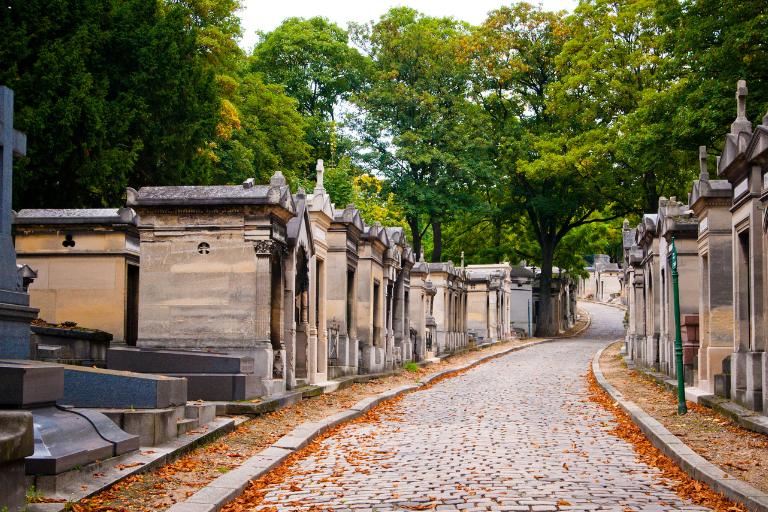
Alexandre Théodore Brongniart, who designed the Pere Lachaise Cemetery, took inspiration from how English gardens were designed. This included features like winding paths and tree-lined avenues that make the cemetery very walkable. With over 5,000 trees, it feels more like a large park than a traditional cemetery.
What gives Pere Lachaise an even more artistic appeal are the 19th-century sculptures adorning many of the graves, ranging from simple tombs to elaborate mausoleums. It’s almost like visiting an outdoor museum made up of Gothic graves, ancient mausoleums, burial chambers and elaborate statues.
Père Lachaise: More than just a cemetery
It might be difficult to believe today, but in the early 19th century, the officials struggled to convince people when the cemetery opened to choose Père Lachaise as their final resting place. It was outside the city and on a hill, making it unappealing to Parisians. To make Pere Lachaise more attractive, authorities transferred the remains of French playwright Molière and the famous lovers Abelard and Heloise here to entice Parisians and add prestige to the newly created cemetery. From what we can see today, it worked like a charm.
The cultural importance of Père Lachaise Cemetery
The most visited cemetery in Paris is home to many cultural icons. Some of the greatest minds, artists and talent have descended on Paris over the centuries. They lived, created and died in Paris, and then were buried at the Pere Lachaise cemetery. Thousands flock here each year to pay respects to their heroes and out of admiration for the legacies they left behind. French writers, American musicians, Irish poets and other international artists are buried here. It’s a collection of famous characters that would make an impressive guest list at any party.
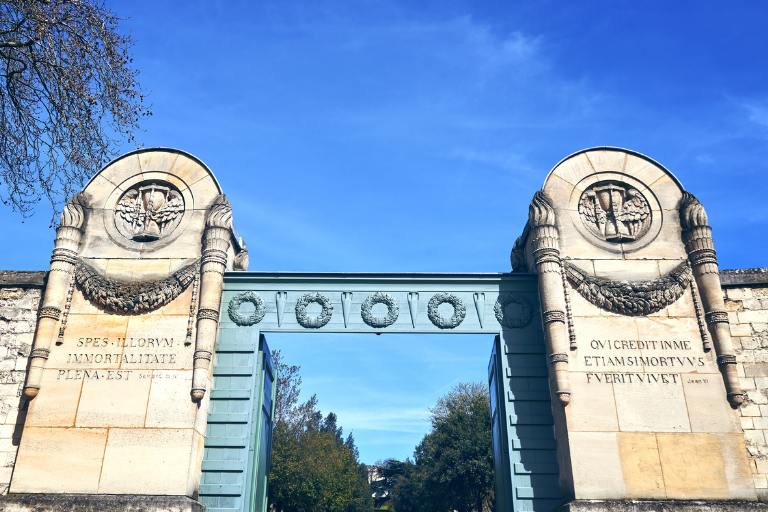
Architectural significance and legacy
The Père Lachaise Cemetery is more than just a burial ground. It’s a historical and cultural landmark with architecturally significant gravestones. These moss-covered tombs, bronze plaques, and glass walls are not just structures, but they hold the history of Paris within them.
You can see a wide range of architectural styles here, from simple headstones to elaborate family chapels known as chapelles funéraires. Many monuments incorporate Gothic Revival elements, reflecting the period’s fascination with medieval architecture. Others draw on various architectural styles, from Renaissance and Baroque to Neo-Gothic and Art Nouveau.
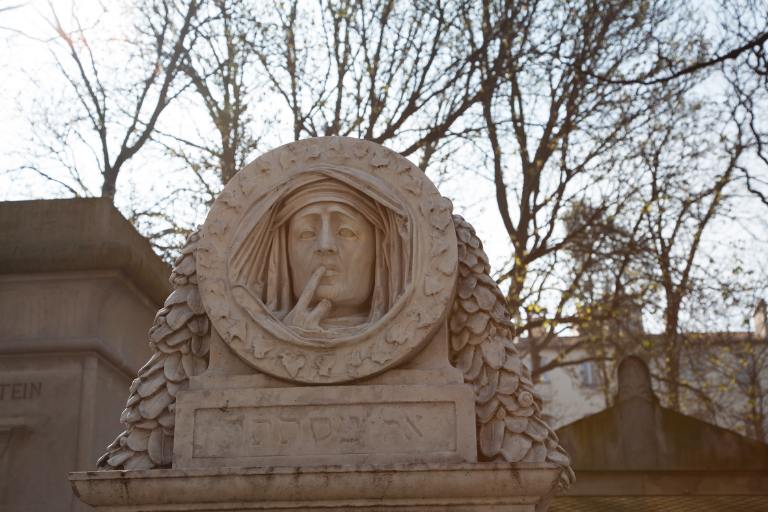
You can even find Egyptian Revival styles, often featuring innovative details like glass roofs and intricate ironwork. Notable examples include the Neo-Byzantine Crematorium (1894) and the Greek Revival-style Casimir Perier Chapel. Many tombs were designed by prominent architects of the time, making the cemetery not just a burial ground but an open-air museum of 19th-century funerary architecture.
Famous people buried in Père Lachaise cemetery
Many famous people are buried here, including musicians, poets, writers, actors, painters and other illustrious citizens. Paris has always attracted creative types, so many of them have lived here at one point or another. For those buried here, death became just the beginning.
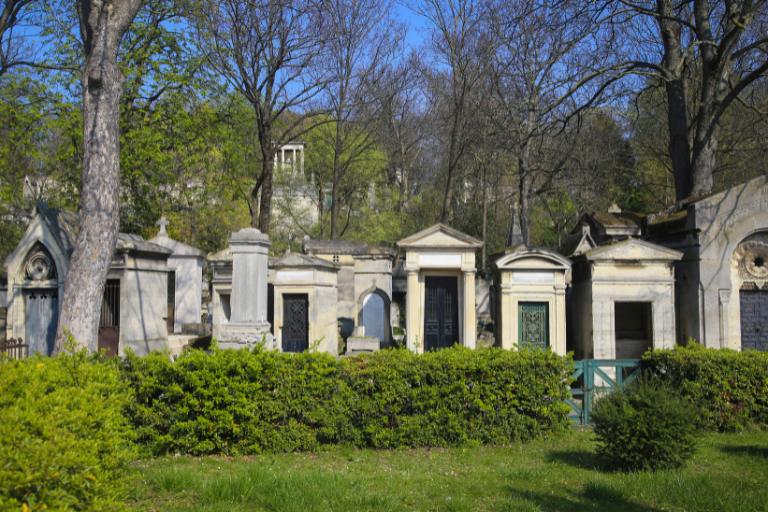
Some graves are so popular that the officials had to fence them off to protect them from visitors’ damage. Both Jim Morrison’s and Oscar Wilde’s graves are an example of this. Overly eager fans have caused significant damage to the graves over the years, and they are now protected from further damage. Everyone visiting the cemetery should respect the graves and the people buried here.
While all the Père Lachaise cemetery graves are interesting and artful, some attract more visitors than the rest. It probably has more to do with who the graves belong to than anything else. However, even those not recognizable today are often some of the most beautiful.
- Abelard and Heloise: If you’re interested in reading more about the tragic love story between medieval star-crossed lovers Abelard and Heloise, you might enjoy reading the letters the two wrote to each other as published here.
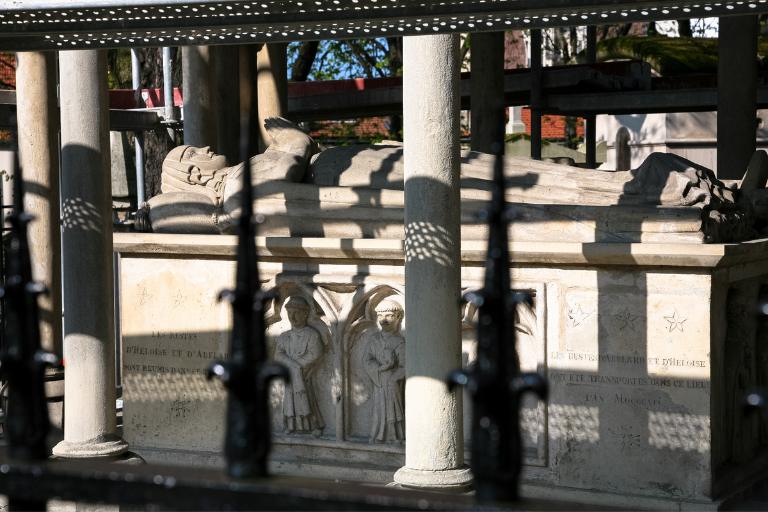
- Jim Morrison: The lead singer of The Doors, Morrison’s grave is one of the most visited, often surrounded by fans and adorned with fresh flowers. He was just 27 when he died, and his death sparked numerous theories. If you enjoy conspiracy theories, you might enjoy reading Jim Morrison’s Death And The Theories Around It.
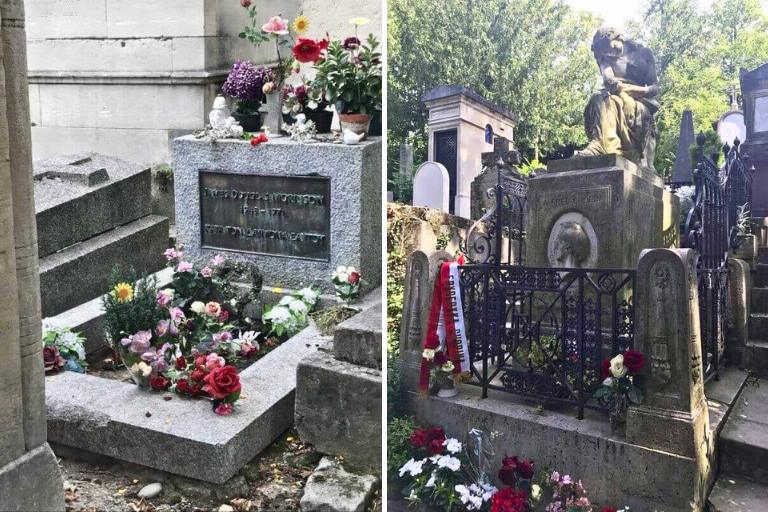
- Oscar Wilde: The Irish poet and playwright’s grave was famously covered with lipstick marks from admirers, which led authorities to erect a glass barrier to protect it. Wilde was a popular and controversial literary figure in late Victorian England. His unconventional and scandalous lifestyle made him a notorious figure, ultimately leading to his downfall.
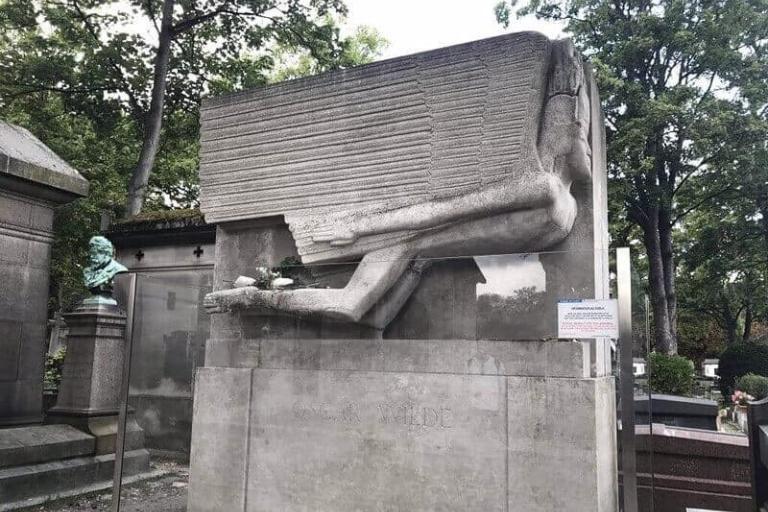
- Victor Noir: Victor was a journalist killed in a duel in 1870. His body was initially interred in a different cemetery but was later moved here at his widow’s request. Today, Noir’s grave is marked by a life-sized statue of him lying down with a bullet hole in his forehead. It is said that if you touch his statue’s crotch, you will be blessed with good luck and fertility. It looks like many have tried their luck.
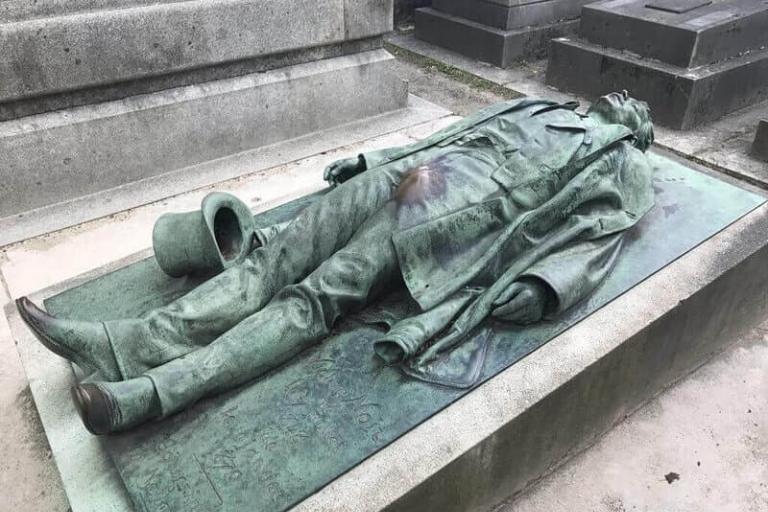
- Edith Piaf: Known as the “Little Sparrow,” Piaf was a famous French singer renowned for her powerful voice and songs like “La Vie en Rose.”
- Frédéric Chopin: Polish composer and virtuoso pianist of the Romantic era, celebrated for his innovative piano compositions and expressive performances.
Noteworthy graves in Père Lachaise Cemetery
The list of famous people would take a long time to compile, so here is a quick snapshot of some of the cultural icons you will find buried at Père Lachaise cemetery.
Writers and poets
- Sidonie-Gabrielle Colette: A celebrated French writer known for her novels exploring female sexuality and independence. Her famous works include “Gigi” and “Chéri.”
- Alfred de Musset: A French poet and playwright associated with the Romantic movement. He is known for his emotional and introspective poetry and the play “Lorenzaccio.”
- Jean-Baptiste Poquelin (aka Molière): Molière is one of France’s greatest playwrights, famous for his timeless comedies such as “Tartuffe” and “The Misanthrope.” His influence echoes through the centuries, shaping the very fabric of French literature.
- Victor Hugo: One of France’s most famous writers, known for his novels “Les Misérables” and “The Hunchback of Notre-Dame.” He’s known for tackling social issues and human rights.
- Marcel Proust: A renowned French writer known for his seven-part novel “In Search of Lost Time” (“À la recherche du temps perdu”). With the themes of memory and time, this work has profoundly influenced French literature.
- Guillaume Apollinaire: A French poet known for avant-garde and surrealist works. His poetry collections, notably “Alcools” and “Calligrammes,” reflect his experimental and innovative style.
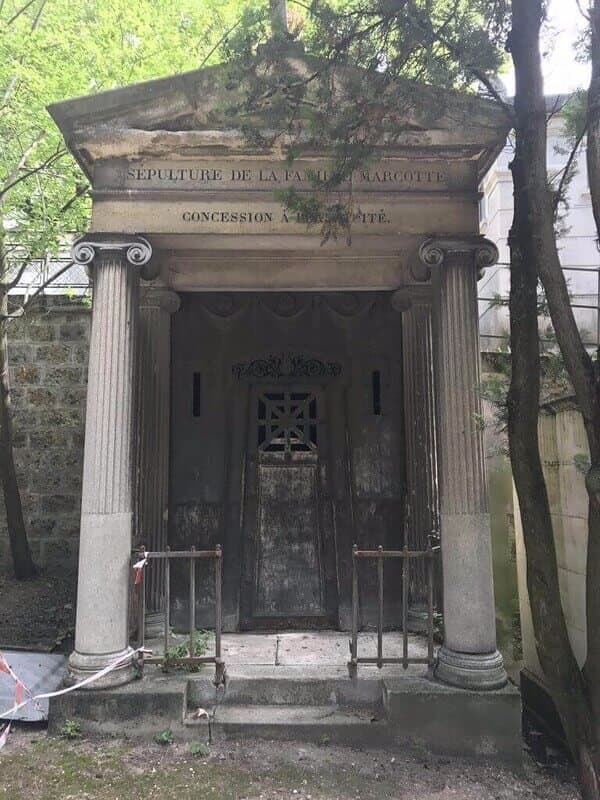
- Jean de La Fontaine: French fabulist and one of the most widely read French poets of the 17th century. His fables, with their universal themes and timeless wisdom, have captivated readers across Europe and beyond, spawning numerous alternative versions in French and French regional languages.
- Honoré de Balzac: A prolific French writer who produced a vast series of novels and stories known as “La Comédie Humaine,” which provides a detailed portrait of French society in the 19th century.
- Gertrude Stein and Alice B. Toklas: Gertrude Stein was an American writer and art collector, famous for her modernist works and hosting a Paris salon that included many leading artists and writers. Alice B. Toklas was her partner and writer, known for “The Alice B. Toklas Cookbook.”
Painters and performers
- Eugène Delacroix: A prominent French Romantic artist known for his dramatic and expressive use of colour. His works include “Liberty Leading the People” and “The Death of Sardanapalus.”
- Amedeo Modigliani: An Italian painter and sculptor famous for his portraits and nudes characterized by elongated faces and figures. His unique style and tragic life story have made him an enduring figure in modern art.
- Camille Pissarro: A French impressionist painter known for his landscapes and rural and urban life scenes. He is considered one of the fathers of the Impressionist movement and played a key role in its development.
- Georges Seurat: A French painter and founder of Neo-Impressionism. He is best known for pioneering the pointillism technique, as seen in his masterpiece “A Sunday Afternoon on the Island of La Grande Jatte.”
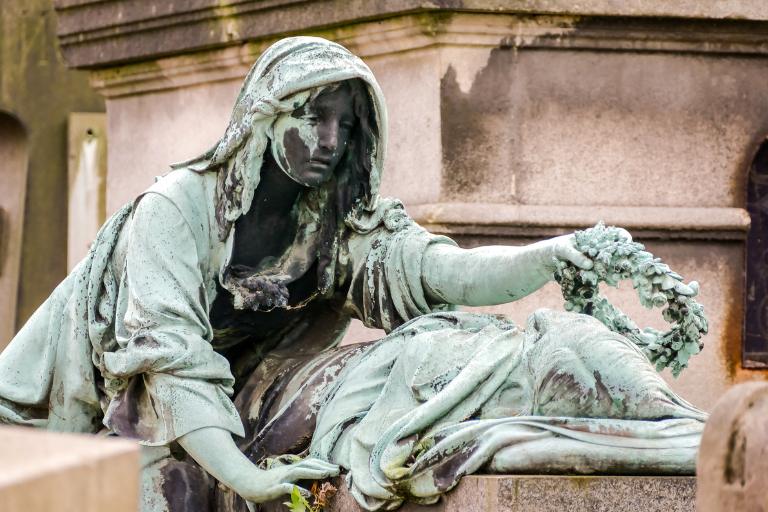
- Théodore Géricault: A French Romantic painter known for his powerful and dramatic works, including “The Raft of the Medusa.” His art often depicted scenes of contemporary events and human suffering.
- Marcel Marceau: World-renowned French mime artist known for his silent performances, such as “Bip the Clown.” His grave is a tribute to his significant contributions to the art of mime.
- Simone Signoret: A celebrated French actress who won an Academy Award for her role in “Room at the Top.” She is remembered for her powerful performances and contributions to French cinema.
- Allan Kardec: The founder of Spiritism, a philosophical doctrine about the afterlife. His grave attracts visitors who leave messages and tokens of appreciation for his work.
- Yves Montand: An iconic French actor and singer who starred in films like “The Wages of Fear” and was known for his charismatic performances on screen and on stage.
Other celebrity graves
- Baron Haussmann: A 19th-century architect and urban planner who transformed Paris with his extensive renovation projects, including the creation of wide boulevards, parks, and modern sewage systems. His work gave Paris much of its present-day layout and grandeur.
- Georges Haussmann: Often confused with Baron Haussmann, Georges Haussmann was a French civil engineer and town planner who played a key role in executing the ambitious urban redesign of Paris during the mid-19th century, making it one of the most beautiful cities in the world.
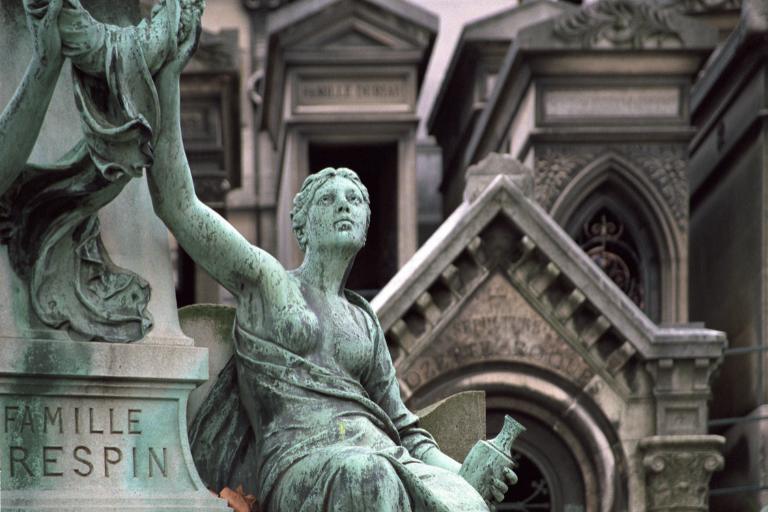
- Mur des Fédérés / The Communards’ Wall: A significant historical site within Père Lachaise, it commemorates the 147 combatants of the Paris Commune who were executed here in 1871. This wall symbolizes the struggle and sacrifice of those who fought for social justice and is a place of remembrance for political activists and historians.
- Princess Vera Obolensky: A Russian aristocrat and a heroine of the French Resistance during World War II, is buried in Père Lachaise Cemetery. She was a significant figure due to her brave efforts and sacrifice in the fight against Nazi occupation.
Tips for visiting Paris’ largest cemetery
A visit to Père Lachaise is a unique experience that blends history, culture, and art. Comfortable walking shoes are recommended, as there is much to explore across the largest park within Paris’s city limits. If you’re a first-time visitor, grab a free map from the cemetery’s official website, which will help you navigate the cemetery.
The Père Lachaise cemetery is easily accessible by public transport. It is a short walk from the Philippe Auguste (Line 2) and Père Lachaise (Lines 2 and 3) Metro stations or from the Philip Augustus stop (Bus 71). The main entrance, Porte Principale, is on Boulevard de Ménilmontant, across from Rue de la Roquette.
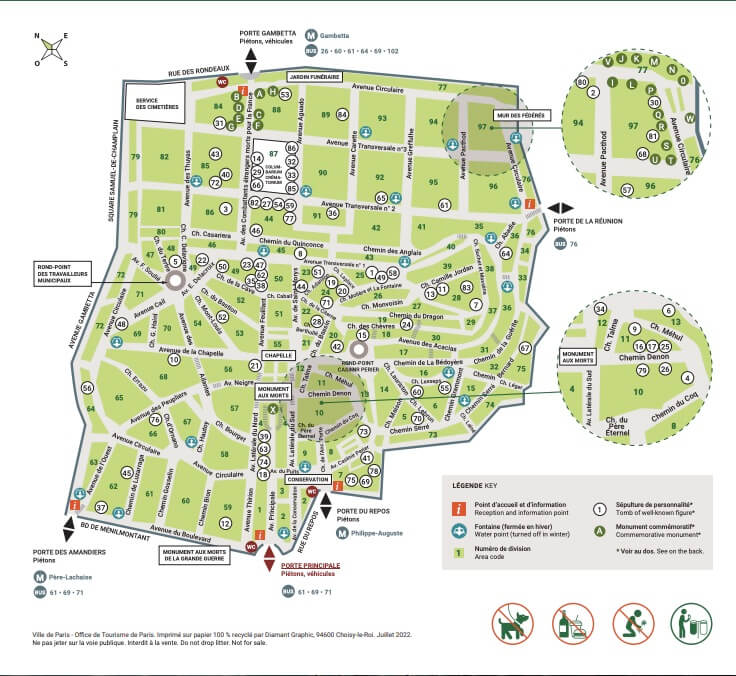
If you’re uneasy about visiting Père Lachaise, I recommend doing so on a sunny day. It will feel more like you’re in a park so that you can focus on appreciating the details of the many artistic finishes on the graves instead of the fact that you are in a graveyard. It really is like a giant park that can be explored for hours. Most of all, it makes for an interesting stop when visiting Paris, and I highly recommend it.
You can stroll along the many roads or cross between the rows of graves in any direction. For a better idea of which spots you want to visit, check out the graves ahead of time to help you plan which ones you want to see. You can download a cemetery map on the city’s official website. The entrance to the cemetery is free. It’s open all year round.
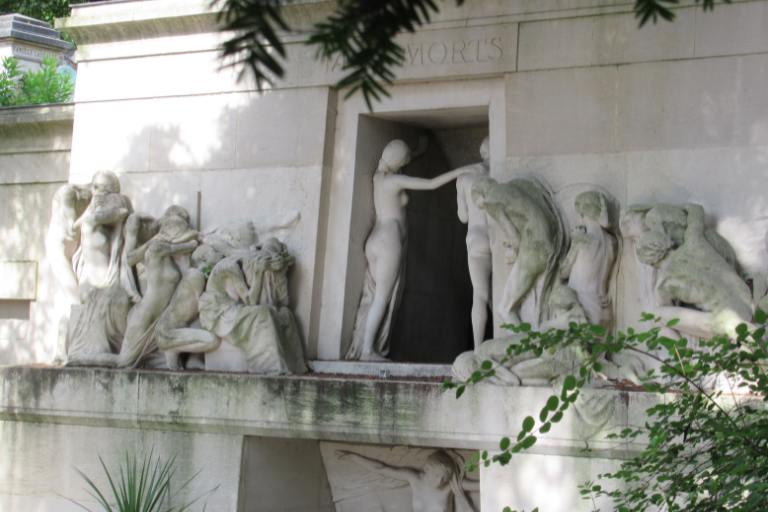
Final thoughts on visiting the Père Lachaise cemetery
The Pere Lachaise cemetery is definitely not your average tourist destination. However, it’s one that offers a different way of learning about the past and the history of Paris. It’s also an opportunity to pay your respects to some of the most influential and prominent figures who once lived here. Ready to experience Paris differently? Make sure to stop by the most famous cemetery in the world. I promise it will be an experience like no other.

